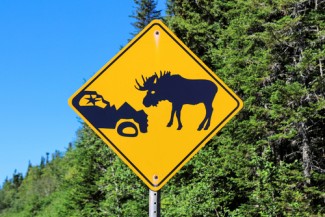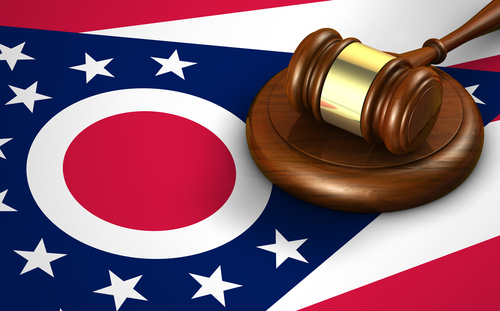Does government owe moose-vehicle crash victims? Lawyer vows appeal after losing class action

A moose-crossing sign in Newfoundland, Canada. Image from Shutterstock.
More than 100 years ago, Canadian officials introduced moose on the island of Newfoundland, intending to provide a source of food.
However, the moose population got out of control and is now the cause of hundreds of vehicle accidents annually as the nearly 1,000-pound, top-heavy animals suddenly sprint across roadways and crash through windshields. Many of the accidents occur on the Trans-Canada Highway.
Attorney Ches Crosbie is trying to hold the Newfoundland and Labrador government accountable in a class action, arguing that measures taken by the province to try to prevent the accidents weren’t sufficient. Although he lost a provincial supreme court ruling last week, he vows to appeal, the Canadian Press reports.
Meanwhile, Crosbie says the court of public opinion may succeed in pressuring officials to accept an out-of-court settlement. He represents 135 injured individuals and the estates of at least 15 who died in post-2001 collisions.
The province’s transportation minister, Nick McGrath, declined to comment on Crosbie’s settlement push and said Newfoundland and Labrador will decide what to do next after reviewing a $5 million pilot moose-control program, the article says.
It utilized increased hunting, highway warnings linked to motion sensors that didn’t always work and 16 kilometers of moose fencing. Crosbie wants to see more “hot spots” on the Newfoundland portion of the highway fenced, at a cost of approximately $42 million, a CBC News article reports.
A post on Crosbie’s law firm website provide further details about his claims.



